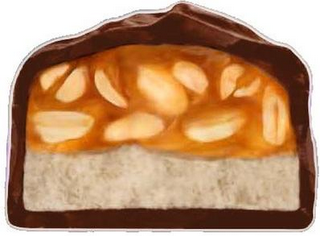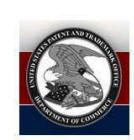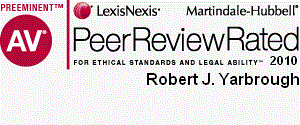Newsletter Issue 57 - November 2013
In this issue:
Editorial - patent injunctions
Google Books project
Value of branding
'After Final Consideration' patent program
Editorial: Why Patent Injunctions Should Return ...
Last week, a jury in San Jose, California awarded Apple Inc.
damages in its long-running litigation against Samsung Electronics
over several patents that cover technologies in Apple's iPhone and
iPad products. When added to the damages awarded last year in an
earlier trial, the total to be paid by Samsung to Apple is $930
million - one of the largest patent damage awards in history.
To put the damages award in perspective, however, one needs to
consider that the award is equal to just NINE DAYS' PROFIT for
Samsung. In other words, pocket change, unlikely to dissuade the
Korean electronics giant from continuing what the jury found was
outright copying of Apple's patented product features. In addition,
Samsung has already announced that it will appeal the verdict and
damages award, so if Apple ever sees this money, it will likely be
after another expensive round in court, and another year or more of
delay and of sales of Samsung's infringing phones and tablets.
In the past, inventors had another legal remedy that put teeth into
the patent system: the injunction. District courts issued permanent
injunctions as a matter of course once they adjudged the patent
valid and the defendant's actions infringing. See, e.g., Richardson
v. Suzuki Motor Co., 868 F.2d 1226, 1247 (Fed. Cir. 1989);
MercExchange, LLC v. eBay, Inc., LLC, 401 F.3d 1323, 1339 (Fed. Cir.
2005). The Court of Appeals for the Federal Circuit even stated that
there is a, "general rule that courts will issue permanent
injunctions against patent infringement absent exceptional
circumstances." MercExchange, 401 F.3d at 1339.
The old rule changed in May 2006 when the Supreme Court overruled
the Federal Circuit's eBay decision. The Court rejected the general
rule of issuing permanent injunctions and decided that the
determination of whether to issue an injunction is just like any
other case. eBay, 547 U.S. 391. Now, a patent owner seeking a
permanent injunction must satisfy a four factor test before a court
may grant such relief. She must demonstrate: (1) that she suffered
an irreparable injury; (2) that remedies available at law, such as
monetary damages, are inadequate to compensate for that injury; (3)
that, considering the balance of hardships between the plaintiff and
the defendant, a remedy in equity is warranted; and (4) that the
public interest would not be disserved by a permanent injunction.
In practice, this decision has made it nearly impossible to stop
patent infringers from copying and selling to their hearts' and
their bottom lines' delight. For instance, an infringer need merely
say to the court, "If you stop me from producing this product,
thousands of my employees will be out of a job, and on the public
dole, which is against the public interest." Voila! No injunction.
This sounds so much like the person who murders his parents asking
for mercy, "because I am an orphan" that it must be a joke, but
sadly, it is the law.
We believe that the old rule, which valued innovation (and notice
that this value is not considered in the four-part test at all) is
the better one. We can hope that some day, the Supreme Court will
have at least one scientist or engineer on its bench to represent
the value that innovation confers on all Americans. At least we can
dream.
-- Lawrence A. Husick, Esquire
Ask Dr. Copyright ...
Dear Doc:
While searching online, I came across thousands of books - not on
Amazon.com, but on Google! I could actually read the pages of those
books because the words matched what I had searched, and most of the
books were scanned right from the library. That's cool - and really
useful, but I thought that Google couldn't just scan every book in
the world because they were sued by a bunch of authors. What gives?
Sincerely,
A Perplexed Searcher
Dear Perp:
You're right! In 2004 Google started the Google Books Project,
working with publishers and some of the world's largest university
and public libraries. Google started to scan every page of every
book it could get its hands on. Here's the way Google described the
effort,
"At the end of the Middle Ages, in a small town in the Rhine Valley,
an unassuming metalworker tinkered with a rickety wine press, metal
alloys and oil-based ink. The result of his labors was an invention
that took the world's information and made it exponentially more
accessible and useful. Six centuries later, we're seeing the same
kind of innovation in the way we access information. Every day, with
a few keystrokes on a computer, people are doing more than simply
visiting their favorite web pages. Like Gutenberg, they are
expanding the frontiers of human knowledge."
The Authors' Guild and publishers sued almost instantly (Authors
Guild v. Google, 1:05-cv-08136.) (After all, this IS America.) They
claimed that Google had no right to make a digital copy of their
books, and that it could only scan books that were in the public
domain (books published before the mid-1920s.) That case has been in
the courts since 2005. The publishers settled, allowing Google to
scan away, but things remained stalled because the authors
disagreed. They demanded $750 per book scanned.
It's important to note that although Google was making a digital
copy of each book, you can't just read the book on line. Google
searches show a page that is a super version of one of those old
card catalog things (you know, the ones you had to learn to use in
elementary school, and that libraries have thrown away now that the
"card catalog" is all on computer?) Sometimes, Google shows where
you can buy or borrow the book, and a page or two, but not the whole
book.
Earlier this month, a federal judge ruled that Google's scanning is
"fair use" under the Copyright Law. It may have taken him almost
eight years, but this is a big thing. Judge Denny Chin, formerly of
the U.S. District Court for the Southern District of New York,
dismissed the lawsuit against Google.
Judge Chin wrote in his ruling: "Google Books provides a new and
efficient way for readers and researchers to find books. It makes
tens of millions of books searchable by words and phrases." Google
Books has become "an essential research tool, as it helps librarians
identify and find research sources, it makes the process of
interlibrary lending more efficient, and it facilitates finding and
checking citations." "Traditionally underserved populations will
benefit as they gain knowledge of and access to far more books," he
wrote. "Google Books provides print-disabled individuals with the
potential to search for books and read them in a format that is
compatible with text enlargement software, text-to-speech screen
access software, and Braille devices."
The Authors Guild said it is "disappointed" in Chin's decision and
plans to appeal it.
"This case presents a fundamental challenge to copyright that merits
review by a higher court," Paul Aiken, the group's executive
director, said in a statement. "Google made unauthorized digital
editions of nearly all of the world's valuable copyright-protected
literature and profits from displaying those works. In our view,
such mass digitization and exploitation far exceeds the bounds of
the fair use defense."
Bottom line: the lawyers will continue to make money, and you will
have to wait a while longer to see if Google will be permitted to
scan those hundreds of millions of books you have never read. Hang
in there.
Have a question about what you're legally permitted to copy, or any
other intellectual property issue? Ask one of the attorneys at LW&H
- they dream about this stuff (and that's a really creepy thing.)
The "Doc"
Branding Rules While Candy Bars Wage Battle ....
If you ever doubted the economic importance of branding, take a
look at the
2013 World Intellectual Property Report authored by the
World Intellectual Property Organization (WIPO). For the period
from 1987 to 2011, United States investments in branding accounted
for close to a quarter of all intangible asset investments! Brand
ranking organizations value the top 10 brands to be worth between 46
and 91 billion dollars, and between 2008 and 2013, the total value
of the top 100 global brands grew by between 19 and 24 percent.
Paralleling the enormous rise in value of the top brands is an
equivalent "unprecedented" rise in the demand for trademarks.
It should come as no surprise then that along with increased
competition, brand owners are constantly pushing the envelope in
their quest to attract loyal customers. Here's a great example of a
major brand's recent attempt at expanding its trademark portfolio
and the push back it received from a major competitor. The Hershey
Company recently filed a
trademark application covering the cross section of its famed
Snicker's bar.

SNICKERS
Hersey believes that the cross-section of its candy bar is
distinctive enough so when a consumer sees it, he or she immediately
thinks "Hershey." How about that for ego? Hershey met little
resistance by the trademark examiner whose descriptiveness objection
was swept aside by Hershey's contention that the candy bar's
cross-section had acquired distinctiveness over time. The Examiner
folded and moved the application on to publication.
Looking for sweet revenge, Mars, Incorporated ("Mars")
opposed the mark on grounds that it is merely descriptive, de
jure functional, generic, and fails to function as a trademark. The
opposition brief is a lesson on how to disqualify a trademark.
Here's what Mars says:
• The applied-for mark is descriptive, not
distinctive. Candy bars with similar cross-sections are not
distinctive but are widespread even among Hershey's own products: OH
HENRY!, BABY RUTH, and PEANUT CHEWS;
• The applied-for mark is "functional because it depicts a candy bar
that results from a widely used and comparatively more efficient or
less expensive method of manufacture for candy bars containing
similar ingredients."
• The applied-for mark is generic and not capable of functioning as
a trademark;
• The applied-for mark does not indicate the source or origin of the
product and, therefore, cannot function as a trademark.
This is a great example of the interaction between aggressive branding, trademark law, and competitive forces. We will follow this story and let you know what happens.
PTO's 'After Final Consideration' Pilot Program
By filing a patent application and paying the filing fee, you are
entitled to two reviews by the patent examiner. The examiner has a
very short and strict time limit to review your application. If the
examiner does not meet that time limit, then he or she may not meet
productivity goals and may be denied raises and promotions. If the
examiner does not meet productivity goals three times, then he or
she is out of a job. By the second rejection of your application,
the examiner likely has reached the end of the time allotted and can
afford to give your application no more time.
In the past, when you received a 'final' rejection; that is, when
the PTO patent examiner rejected your application for the second
time, you generally had three options. You could:
(1) File amendments that placed the application in condition for
allowance. Such amendments generally are limited to accepting what
the examiner has decided that he or she will allow.
(2) File a 'request for continuing examination' and pay an
additional filing fee for two more reviews. In addition to the extra
cost, this option generally defers final resolution for another six
to nine months.
(3) File an appeal to the Patent Trial and Appeal Board. The cost
for an appeal is at least several thousand dollars and average time
to resolve an appeal is three years.
You now have a fourth, and highly attractive, option: you can ask
for additional consideration under the 'after final consideration'
pilot program. The 'after final consideration' program gives the
examiner extra time to review your application and hence makes the
examiner willing to further consider your application. That further
consideration may include an interview with the examiner and
amendments to the claims. There is no filing fee to take advantage
of the program and no additional delay. What's not to like?

